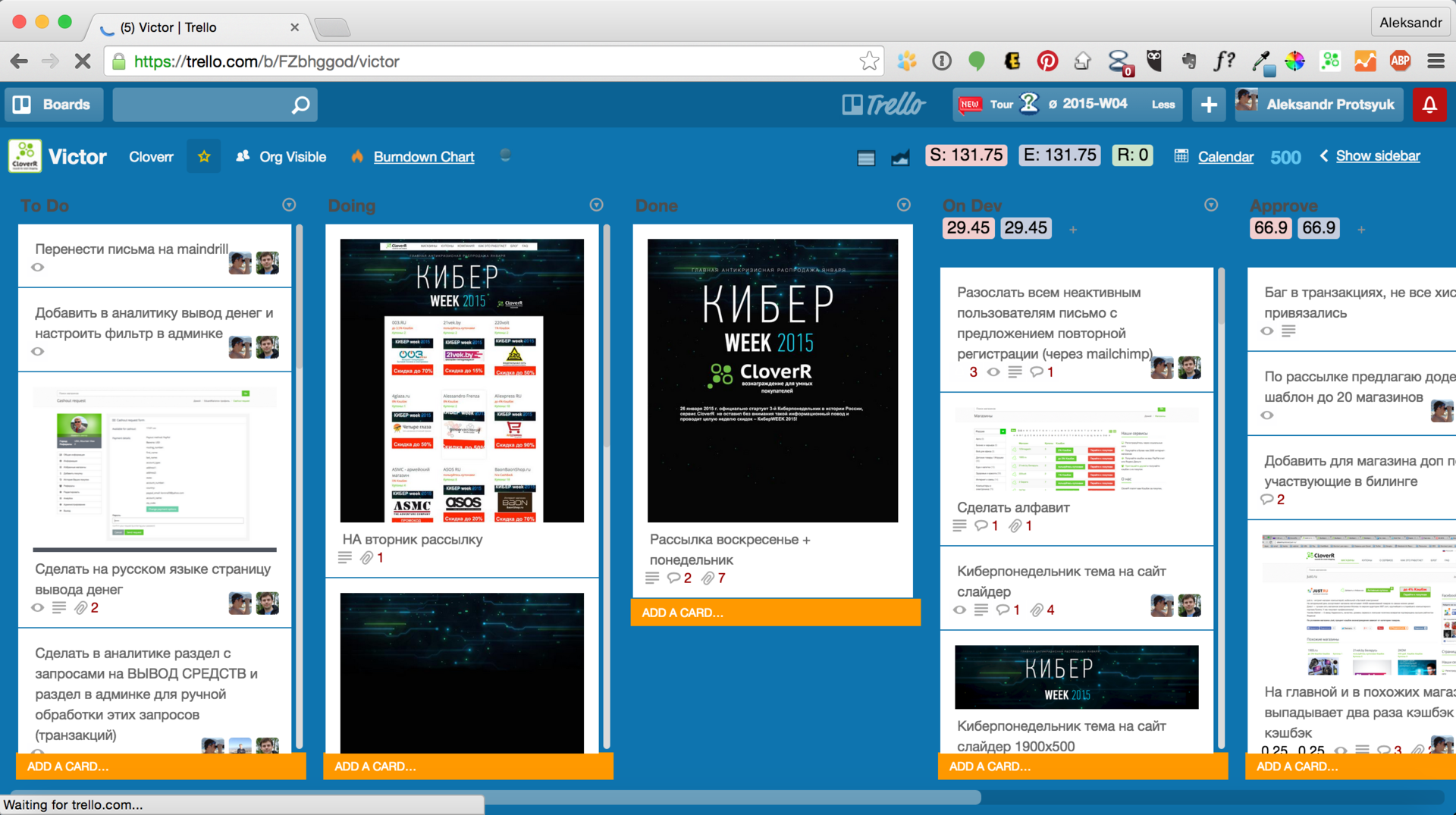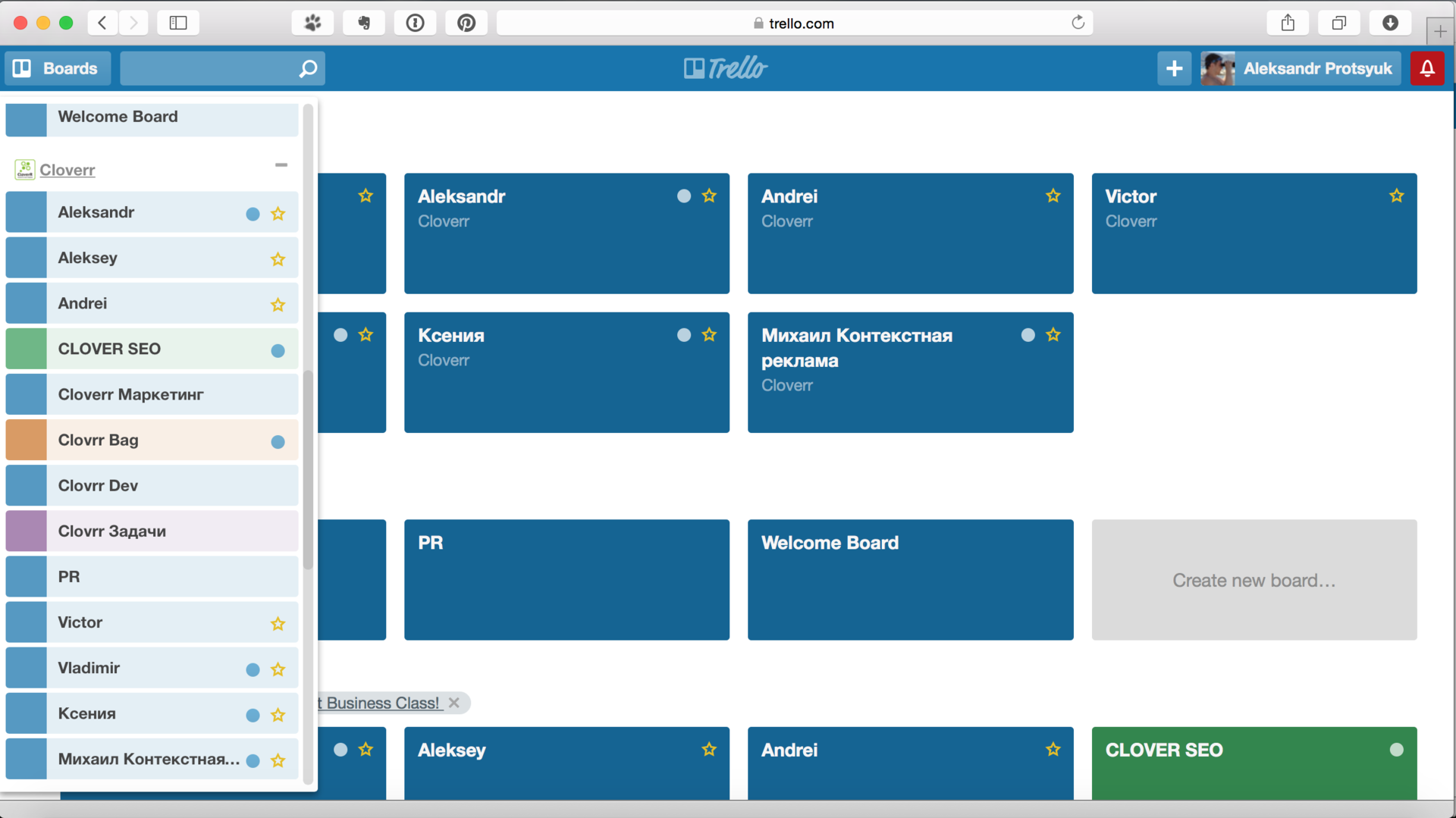Experience in organizing a remote team in CloverR

In this post we will talk about how remote work is organized in our cashback service, whose team is located on different continents and in different cities. Now the team members are located in San Francisco, Chicago, Moscow, Vyborg, Yekaterinburg, Chelyabinsk, Tver, Perm, Kiev. It is unlikely that any innovations or discoveries will be described here, but perhaps our experience will be useful to teams who are only thinking about moving to remote work.
Background
The company is based in Silicon Valley, but also operates in Russia, so remote work is dictated more by necessity than by caprice or fashion. This method of work is not suitable for everyone, as we have seen personally by saying goodbye to several team members.
Modern trends
The trend of transition to remote development certainly has a place to be. This is understandable, given the development of the Internet, which has destroyed the boundaries for working on the Internet between cities and countries. Probably the most ardent supporters of remote development are 37signals , who write interesting books like Rework on this subject, which, for sure, everyone read. Small startups from the Valley that we know also often use the services of a remote team, which is cheaper. Large companies also resort to the services of remote outsourcers, because they can not always find them nearby in a competitive battle for employees, the struggle for which has become even tougher.
Technology
-Trello
-Skype
-Google Hangouts
-Dropbox
-Google docs
Pros of remote development
1. Remote team is much cheaper. If we consider the prices of Silicon Valley, then a good developer costs from $ 200k per year. For this money, you can get 10 developers from Russia or Ukraine, especially if you take into account the current dollar exchange rate.
2. Remote employees are easier to find. This is a very simple and understandable formula that says that you can get more needed specialists from a larger sample. If the sample is one city, then there are fewer candidates than a whole country or a whole world.
3. Fixed costs are reduced. In the presence of a remote employee, it is completely optional to pay for the office, equipment, etc.
4. With a remote employee, it’s easier to agree on design work that occurs only in a certain period of time.
5. The ability to make good money to developers from small cities. The thesis “Where it was born, it came in handy” ceases to work for programmers, designers, marketers and other employees whose activities are related to the Internet.
Cons of Remote Development
1. Requires a high degree of self-organization. This means that a particular developer should appear on remote stands at the right time. We can say that remote development most often stumbles on a rake of self-organization. If you go to the office every day, then you have a certain daily routine that you stick to, but if you don’t need to go anywhere, excesses can happen.
2. The time difference. We really feel this shortcoming on ourselves, because our stand-ups often take place early in the morning and late in the evening, since the difference reaches 11 hours. When Moscow is 9am, San Francisco is 10pm.
3. Lack of physical contact. When you work in the office, you can approach your colleague and pay attention to your task. With remote work, it remains to hope that a person will respond promptly on Skype.
Process
Since most of our developers are in Russia, we chose the time of stand-ups at 9 am Moscow time. We call up every working day no matter what. We use Skype and Google Hangouts. Most of the development team is involved in this call. We discuss past tasks and plan new ones. We decide strategic things and set priorities. These stand-ups are the engine of the whole development. Every Friday we summarize the week and plan the next.
We also have conference calls at other times. Several phone calls in the evening and afternoon with other team members. For example, we discuss PR on Monday at 20:30 Moscow time.
Trello
We selected Trello as the accounting and task management system.. Previously tried Basecamp and Jira, but they did not take root. Trello is built on the Kanban methodology, which involves moving tasks from column to column, which is a very simple and intuitive visual tool.
This is what the trello interface looks like for our team:

Each person has their own boards, on which his personal tasks are tracked, and also there are common boards for joint tasks.
Each member of the development team has these sheets:
-To Do (assigned tasks, performed from top to bottom)
-Doing (completed tasks)
-Done (completed tasks)
-on Dev (transferred to Dev)
-Approve (approved tasks)
-Close (closed )
All approved tasks are transferred to production. There are also boards with strategic tasks, which are then assigned to a specific contractor. There is a board for bugs.
Here are some useful Trello batteries that we use:
- Plus for Trello - time tracks
- Scrum for Trello - scrum functionality
- Lovely for Trello - makes Trello a little more compact and beautiful.
Every week, based on the data in trillo, we collect summary reports in Google Docs, which serve as a source for accounting and financial analytics.
For promotion, we have a media plan in which we plan and record the results of promotion. For convenience, we are working on it, not in trill, but in googlodoks, to see the picture in a week, a month. year.
In conclusion, we want to note that remote work is a huge force for beginner teams, which, it’s quite simple to implement in your business processes and which, with a sufficient degree of discipline, can become a powerful competitive advantage.
PS This week was the third in the history of Russia Cyber-week 2015, during which online stores made very big discounts, and in the next post we will talk about how we attracted users to the cashback service as part of this event, how the audience was motivated to buy and which channels were used to disseminate information.
